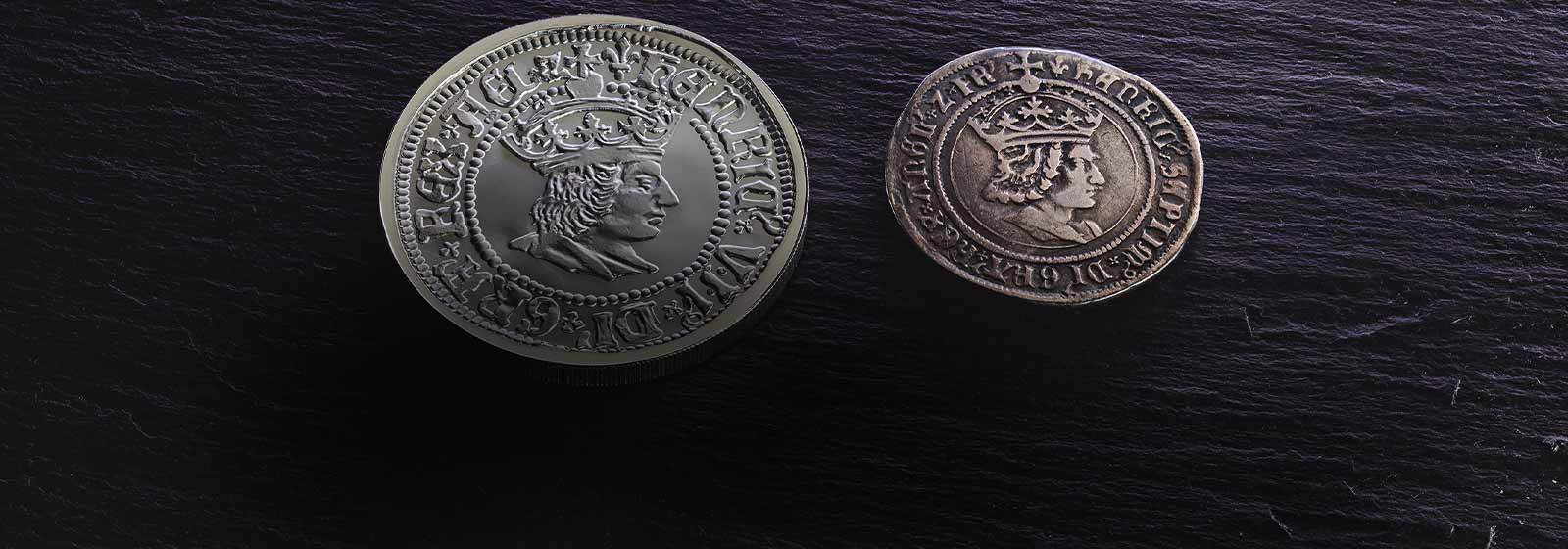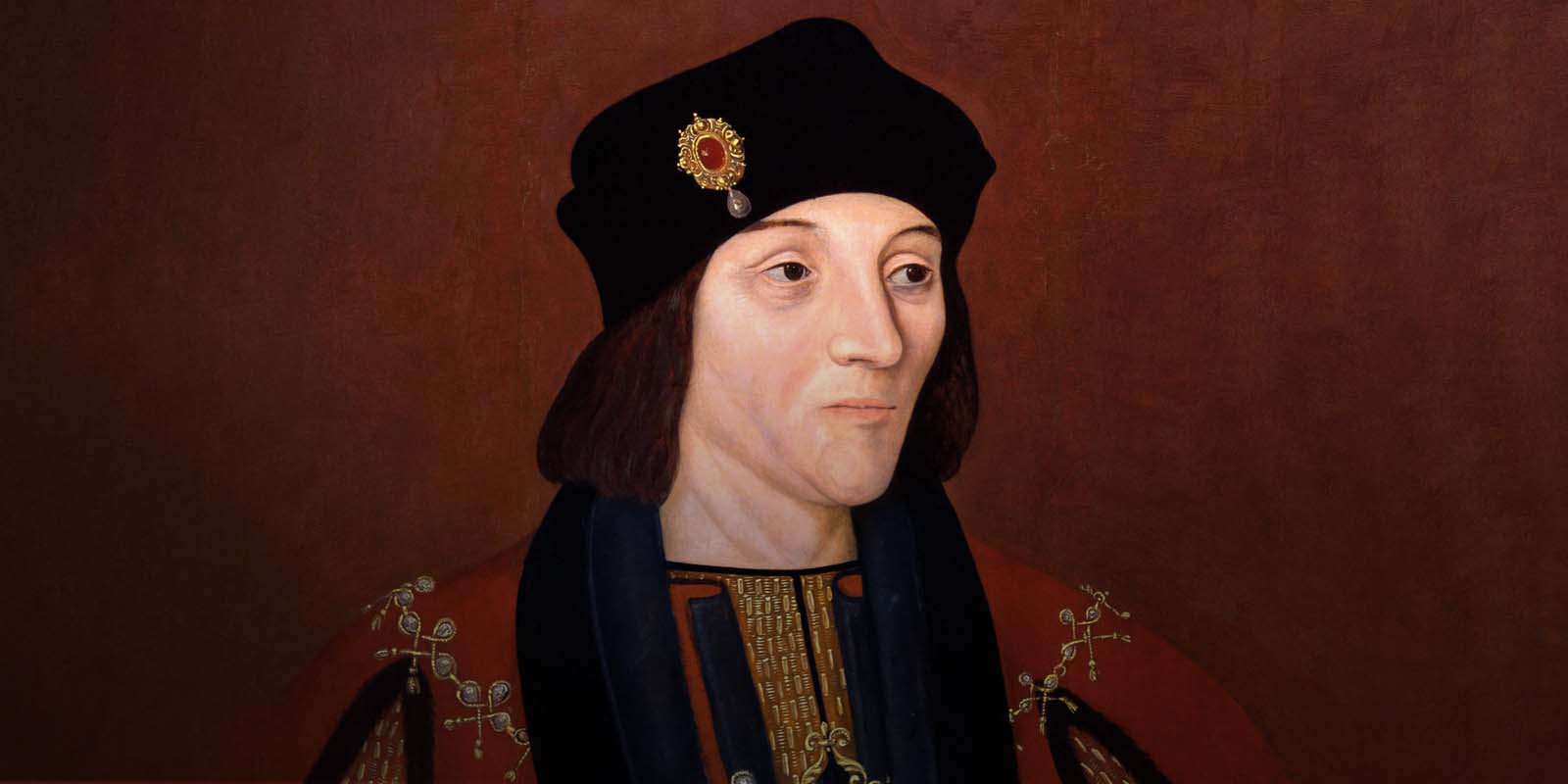Throughout history, the coins of the British Isles have presented a tangible timeline of the nation’s kings and queens. For more than 500 years, these metallic mementos of days gone by have featured coinage portraits of these monarchs, providing a fascinating window into yesteryear.
Whilst coins had historically featured a variety of obverse designs throughout the medieval period, it was Henry VII (r. 1485–1509) who championed the regular reintroduction of more realistic portraiture on English coinage – a practice that had not been seen consistently since the Romans. However, the revival of realistic portraiture was not the only notable change to the coinage during the Tudor king’s reign.
By defeating Richard III at the Battle of Bosworth Field, Henry Tudor was officially crowned King Henry VII on 30 October 1485 – a coronation that heralded the end of the epic Wars of the Roses that haunted England for 30 years. Henry VII’s coronation brought much-needed peace to the country after three decades of conflict and with it came the end of the medieval period. Such a monumental achievement spelled an equally monumental shift in power and – much like the monarchs that came before him – Henry VII was keen to convey this power on the currency of his kingdom.
Whilst there was a continuation of a number of denominations already in active use, Henry VII introduced several high-profile coins into English currency. In terms of numismatic evolution during the reign of Henry VII, perhaps the most prominent example of the Tudor king’s influence is the iconic gold Sovereign – the first £1 piece in English history. Steeped in splendour, it was introduced in 1489 when Henry VII demanded a ‘new money of gold’ and, although it wasn’t the first gold coin to be struck, it was the largest and most valuable coin issued at that point.
The original design featured an image depicting Henry VII sat on his throne – complete with a crown, orb and sceptre – whilst the reverse displayed the Royal Arms atop a backdrop dominated by the unmistakable Tudor rose. Impressive, valuable and regal, this new coin symbolised power, prestige and stability following the turbulent Wars of the Roses. Consequentially, every Tudor monarch that followed continued to issue the gold Sovereign.
Although the gold Sovereign was replaced at the start of James I’s reign and the subsequent advent of the Jacobean era, the coin made an emphatic return in 1817 – albeit with a few notable differences – following the Battle of Waterloo. Smaller and lighter than the original, the revived coin featured an image of St George and the dragon, masterfully designed by Benedetto Pistrucci. The Sovereign is an important coin in British history that has truly stood the test of time and remains one of our most popular and eagerly anticipated coin releases every year.
In addition to the gold Sovereign, another hugely influential coin introduced during Henry VII’s reign was the testoon, which would go on to become the shilling. Introduced in the early 1500s, it notably featured a realistic profile headshot of the reigning monarch – much like the groat and halfgroat – as opposed to a more abstract image representing the king’s likeness that was typical of medieval coinage. The impact of Henry VII’s realistic coin portrait included on the testoon, groat and halfgroat proved revolutionary in terms of English coin design and signalled a shift towards more realistic coin portraiture thereafter.
Many believe the original design for the coinage portrait of Henry VII that appears on the testoon, groat and halfgroat is attributable to Alexander of Bruchsal, who served as an engraver for The Royal Mint at the time. Bruchsal was a Bavarian-born goldsmith, medallist and die engraver whose numismatic importance resurfaced in the early nineteenth century through the papers of Henry Symonds, F.S.A, in the British Numismatic Journal. For his apparent work on the Henry VII portraiture, Symonds branded Bruchsal as ‘the father of English medallic portraiture’. However, despite such praise, Bruchsal’s continued involvement with English coinage design is questionable due to the lack of verifiable documentation. Sadly, the sheer length of time that has passed since Henry VII’s reign leaves many coin details from this era as unfortunate mysteries, including Bruchsal’s time at The Royal Mint.
Nevertheless, Bruchsal’s position as an engraver at The Royal Mint, coupled with his tenure of service coinciding with Henry VII’s reign, does suggest that the design is likely to have been his numismatic handiwork. Chosen for inclusion in our British Monarchs Collection, this innovative obverse design appears on the coin dedicated to Henry VII, remade using state-of-the-art, numismatic technology. For more information on how this revolutionary coin release came to be, read our exclusive interview with our Chief Engraver Gordon Summers. Meanwhile, you can purchase the British Monarchs Henry VII design in its various forms by visiting our Henry VII British Monarchs page now. Discover this classic coin design remade for today and explore how we are remaking history with The British Monarchs Collection.
BRITISH MONARCHS - BEHIND THE DESIGN
Find out more

